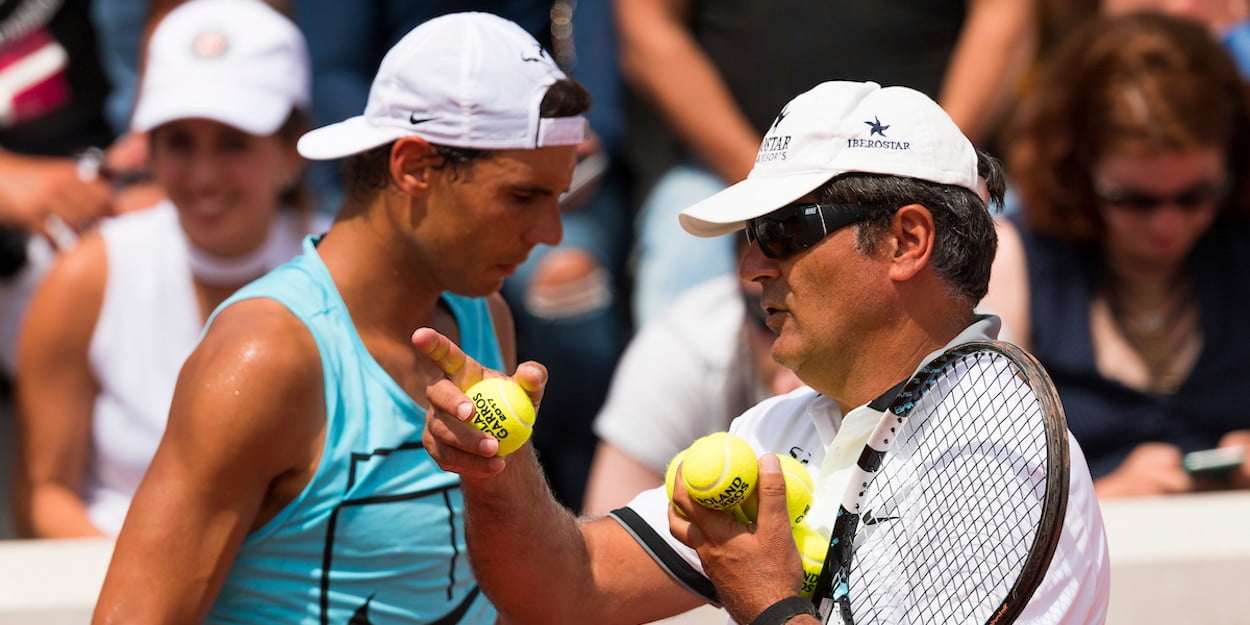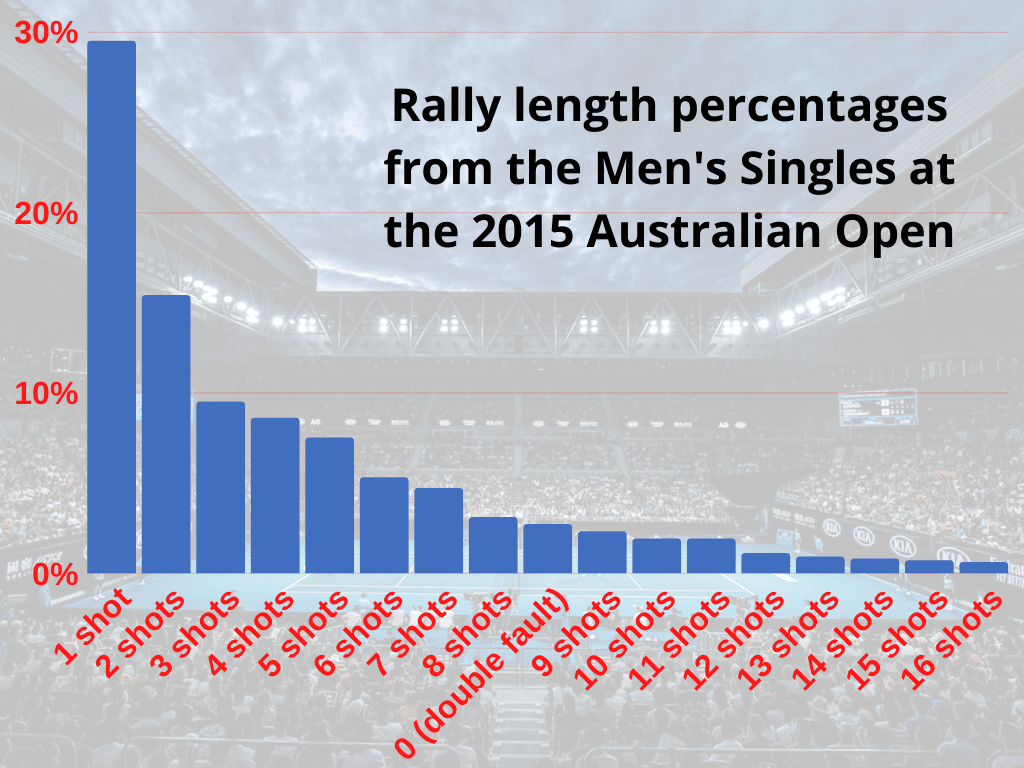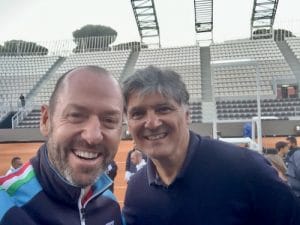
The one shot rally: World’s leading strategy expert, Craig O’Shannessy, highlights the most important practise decision you’ll ever make
For your whole tennis life it’s highly likely that you’ve been practising the wrong way! Here Novak Djokovic’s strategy tactician explains why you need to rip up your usual training plan and focus on the one shot rally.
We’ve teamed up with the world’s best tennis tactics and strategy analyst, Craig O’Shannessy, to find out how he uses statistics to help improve the games of both top professionals and amateur players alike. Craig has now agreed to give tennishead readers this expert guidance on how to harness the power of statistics to win more matches.
In this the fourth of a series of weekly articles to be published for free on tennishead.net, Craig looks at the data related to the average length of a rally with statistics from a Grand Slam tournament used to back up his analysis. He then uses these game changing facts to guide you towards a more effective practise strategy. Prepare to change the way you think on a tennis court forever…
**Here, you can read Craig’s first analysis article for tennishead where he reveals the surprisingly small percentage of points won you should target in each match. And Craig’s second article focusses on how to detach your emotions to play better tennis. Craig’s third article taught us about our sword and our shield. Read it here for free**
You play three shot rallies and eight shot rallies and 15 shot rallies and everything in between. But do you know which is the most common rally length you play?
When I first presented this information at the 2016 Australian Open coaches conference, the answers typically fell in a range of four shots to eight shots as most common. Amazingly, it was a new way to analyze our sport, with the coaches never contemplating this question before.
Well, as it turns out, they were way off base! The most common (the mode) rally length in tennis, by far, is a rally of just one shot. It’s important to understand that rally length is distinguished by the ball landing in the court, not hitting the strings.
So if I serve to you, and you return it, and I hit a winner, that’s a rally length of three, as three balls landed in the court. But on the next point, I serve to you, and you return it, and I commit an error, that’s a rally length of two, with just two balls landing in the court.
A rally length of one is by far the most common rally length in our sport. The serve landed in, but the return was missed, or it was an ace. Here’s the breakdown from the men’s draw at the 2015 Australian Open…

Think about it like this…
The most popular answer amongst the 250 coaches at the conference was four shots. These coaches have spent a lifetime playing tennis as juniors and adults, coaching it as their profession for decades, and watching hundreds of thousands of hours of matches live and on television.
And they thought four happened more than one. A four shot rally happened 8.6% of the time. A one shot rally happened 29.5%. How in the world can we be so confused to think something that happens 8.6% is more abundant than 29.5%? A one shot rally is almost 350% as abundant!
What does this mean for your practice court? You better work on your serve and return a lot more, and work less on hitting six balls in a row in the court, which is a 12 shot rally, which happens just 1.9% of the time.
Let the reality of the match court dictate your practice court and spend more time practicing what happens with the greatest frequency in a match.
Read Craig’s first analysis article for tennishead where he reveals the surprisingly small percentage of points won you should target in each match.
Read Craig’s second article for tennishead which focusses on how to detach your emotions to play better tennis.
Read Craig’s third article for tennishead which teaches us about our sword and our shield.
 Craig O’Shannessy is the creator of Brain Game Tennis. For 20 years he’s been involved in tennis as a coach to players like Kevin Anderson and also with Dustin Brown when he famously beat Rafa Nadal at Wimbledon. More recently Craig’s been working as a match analyst at Wimbledon and for the ATP Tour. He has also used the unique insights from his match analysis software dartfish to guide players such as Novak Djokovic with analysis of opponents and performances.
Craig O’Shannessy is the creator of Brain Game Tennis. For 20 years he’s been involved in tennis as a coach to players like Kevin Anderson and also with Dustin Brown when he famously beat Rafa Nadal at Wimbledon. More recently Craig’s been working as a match analyst at Wimbledon and for the ATP Tour. He has also used the unique insights from his match analysis software dartfish to guide players such as Novak Djokovic with analysis of opponents and performances.
Craig has been writing for tennishead magazine for a number of years and is now working with us on this series of features aimed at using his statistical skills to help you improve your tennis game.
Visit BrainGameTennis.com for your free guide on the ‘8 ways to force an error’ and to find out more about Craig, the world’s best tennis strategy coach.
- Join the tennishead CLUB and receive £250/$350 of FREE GEAR including ASICS Gel-Resolution 8 trainers, shorts, shirt & socks
- Keep up to date with the breaking news & tennis action at our tennis news section
- Win amazing prizes by entering our competitions
- Learn more about your favourite players including Roger Federer, Rafa Nadal and Novak Djokovic
- Check out the latest tennis equipment with our tennis gear reviews
- Receive regular updates in our legendary free newsletter
- Read in depth features with stunning photography in tennishead magazine
- Can’t visit the tournaments you love? Check out our guide on how to watch tennis on TV
- Don’t miss a thing with our Live Scores service
- Follow tennishead on social media at Facebook, Twitter, Instagram & YouTube
- EXCLUSIVE 5% DISCOUNT for all tennishead readers on tennis rackets, balls, clothing, shoes & accessories with All Things Tennis, our dedicated tennis gear partner


